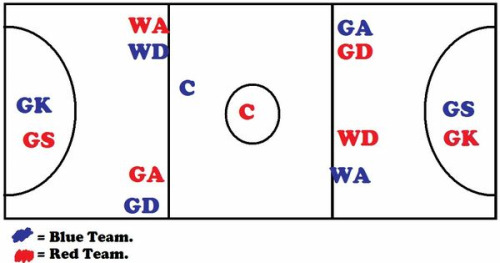The sequences of primers and the annealing temperature for PSS1, PSS2 and PEMT amplifications ended up: 59ATGTGATCACCTGGGAGAGG-39 (feeling) and 59-CCATTGCACAACAGGATGTC-39 (antisense) at 55oC, 59-GGCTCGTCTTCTTCGTGAAC-39 (sense) and 59-GATGTAGAAGGGCAGGGACA-39 (antisense) at 58oC, 59-AAGACCCGCAAGCTGAGCA-39 (perception) and fifty nine-AGTACATGGGGTTGTCCAGGA39 (antisense) at 58oC, respectively. The amplification was executed with damaging and positive controls employing the optimal number of cycles to ensure that the amplification was completed inside of the exponential range. Identified at: doi:10.1371/journal.pone.0010789.s005 (.10 MB TIF) Figure S6 Results of illness and AKT1 rs1130233 on AKT1 transcripts. It should be mentioned that, though there were no differences in AKT1 protein stages  or NRG1-stimulated phosphorylation among lymphoblasts from patients and controls, twoway ANOVA confirmed important effects of ailment on AKT1 mRNA levels (p = .0263), but no consequences of AKT1 rs1130233 (P = .1514) or no interactions amongst illness and rs1130233 (p = .4275). It is unknown whether or not this elevation reflects compensatory mechanism(s) of unidentified problems related to AKT1. Y-axis, AKT1 mRNA, qPCR final results normalized to the geometric indicate of a few property keeping genes. Genuine-time overlay histogram signifies the two exterior and internal expression of PS in COMT-transfected cells (filled in black) and handle vector-transfected cells (unfilled) in the gated location (squares in the two-parameter histograms). (C) The ratio of the proportion of cells in the upper proper quadrant when compared to that in the decrease proper quadrant in COMT-transfected cells was considerably reduce than in cells transfected with the manage vector (P = .0191). (D) PS fluorescence intensity in the gated area (squares in the twoparameters histogram) was considerably decreased in cells transfected with COMT in contrast with cells transfected with management vector (p = .0319).
or NRG1-stimulated phosphorylation among lymphoblasts from patients and controls, twoway ANOVA confirmed important effects of ailment on AKT1 mRNA levels (p = .0263), but no consequences of AKT1 rs1130233 (P = .1514) or no interactions amongst illness and rs1130233 (p = .4275). It is unknown whether or not this elevation reflects compensatory mechanism(s) of unidentified problems related to AKT1. Y-axis, AKT1 mRNA, qPCR final results normalized to the geometric indicate of a few property keeping genes. Genuine-time overlay histogram signifies the two exterior and internal expression of PS in COMT-transfected cells (filled in black) and handle vector-transfected cells (unfilled) in the gated location (squares in the two-parameter histograms). (C) The ratio of the proportion of cells in the upper proper quadrant when compared to that in the decrease proper quadrant in COMT-transfected cells was considerably reduce than in cells transfected with the manage vector (P = .0191). (D) PS fluorescence intensity in the gated area (squares in the twoparameters histogram) was considerably decreased in cells transfected with COMT in contrast with cells transfected with management vector (p = .0319).
Case-control comparisons for allele frequencies had been carried out by chi-square examination and Fisher’s precise take a look at. The standard evaluate of linkage disequilibrium (LD), A P price of .05 was regarded as substantial in checks for Hardy-Weinberg equilibrium. In between groups comparisons have been executed by utilizing unpaired t assessments, or Wald-Wolfowitz runs test, in which relevant. The influence of genotype was assessed by ANOVA and followed by Fisher’s post-hoc comparison matrices. The parametric partnership between the quantity of concentrate on allele and numerous phenotypes was assessed utilizing regression evaluation. Info have been expressed as mean six SEM.
The genome of eukaryotic cells is vulnerable to a lot of DNA18612316damaging brokers, which cause devastating cellular effects. Cells utilize many mend pathways to conquer the deleterious results of DNA hurt and keep their genome integrity. Nucleotide excision fix (NER) gets rid of a broad variety of double-helix-distorting DNA lesions, like UV-induced cyclobutane pyrimidine dimers (CPD) and six-four photoproducts (six-4PP) [one]. NER is composed of two sub-pathways: international genomic restore (GGR), which eliminates DNA damage from the whole genome and transcription-coupled restore (TCR), which gets rid of lesions found on actively transcribed genes [two]. Flaws in NER are EMD-121974 associated with a number of uncommon autosomal recessive genetic ailments, e.g., xeroderma pigmentosum (XP), Cockayne syndrome (CS) and trichothiodystrophy (TTD) [three], emphasizing the crucial role of NER in preserving genomic security. twin incision, and hole-filling DNA synthesis measures [four,5]. In GGR, the harm-induced DNA distortion is regarded by XPChHR23B protein complex [6,seven], and then transcription factor II H (TFIIH) protein intricate is recruited via its conversation with XPC to open the DNA helix close to the hurt web site [80].
